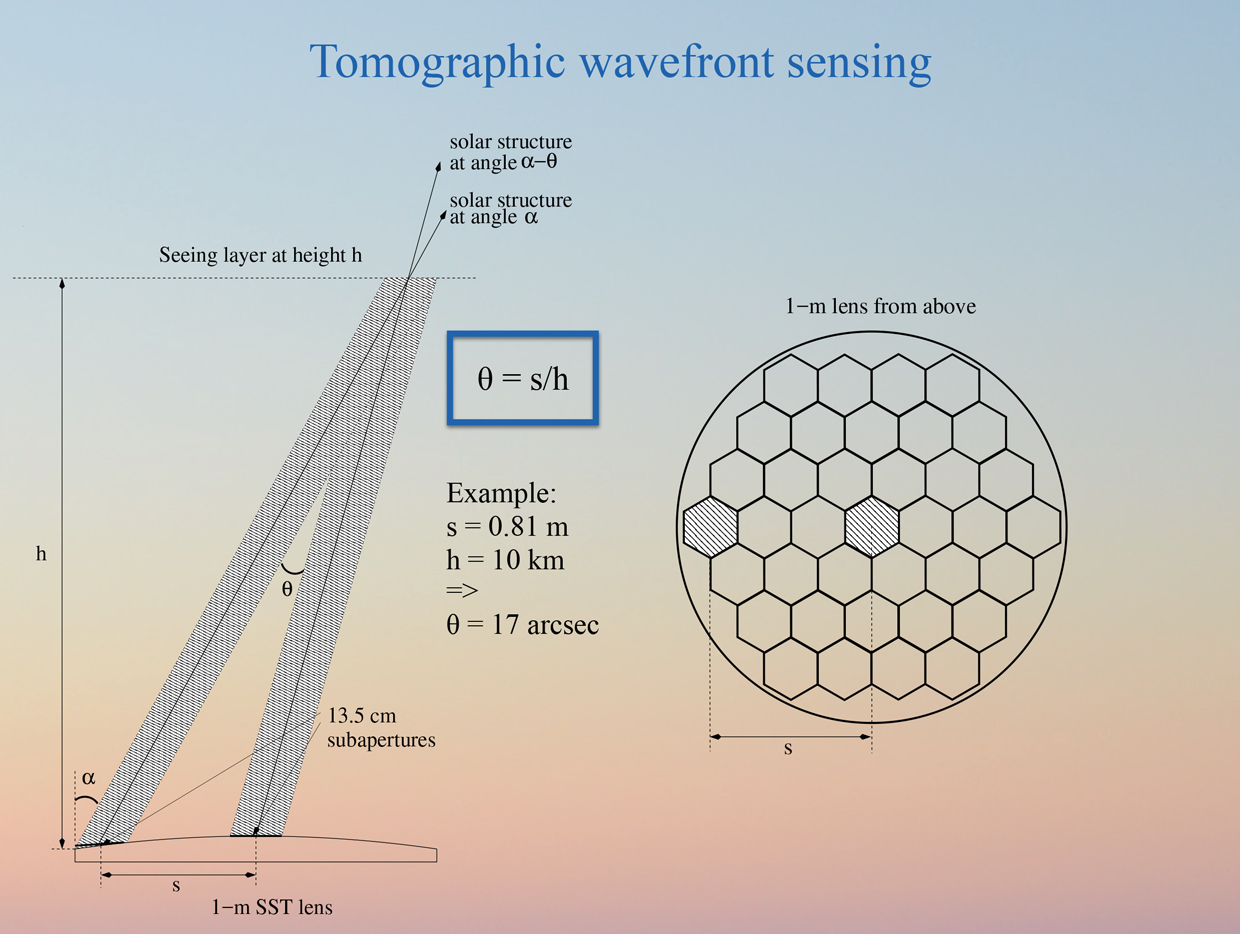EST will be built either on La Palma or on Tenerife. To assess which location is better, it's important to develop a genuine understanding of the image quality conditions of the atmosphere

An obviously critical part of the EST project is to identify the optimum site for the construction of EST. It is well-known that the observatories on La Palma and Tenerife are the best locations for solar telescopes in Europe, but how to assess whether one site is better than the other?
A project has therefore been initiated that aims at developing a genuine understanding of the contributions to image quality (“seeing”) from the atmosphere above two currently- operational solar telescopes: the Swedish 1-m Solar Telescope (SST) on La Palma and the Vacuum Tower Telescope (VTT) on Tenerife.
The method used is based on a well- known concept proposed for night- time site testing and further developed for solar telescopes, namely to measure the relative image motion of solar fine structure observed with two small telescopes. This provides quantitative information about the integrated seeing along the line of sight to the Sun. We have taken this method one step further by using several 14-cm telescopes (divided optically within the apertures of the 1-m SST and 70-cm VTT). We furthermore observe a large field of view to allow a tomographic view of the contributions to the seeing from different heights in the Earth’s atmosphere.
Figure 1 shows how this works. Using two telescopes separated by a distance s, we observe a particular seeing feature at some height h. This seeing feature is observed against different solar fine structures for the two solar telescopes and this allows us to measure the height of the feature. Figure 2 shows similar-looking seeingstructures observed through 37 small telescopes at the SST.
The status of the project is that we have established in two publications (one in press) that the measured seeing quality is strongly correlated to the quality of science images. The systems for SST and VTT are installed and operational. We are waiting for the replacement of the VTT vacuum window to start recording comparative data.

